Anyone who drives between Delaware and Circleville knows the headaches of stop-and-go traffic along the heavily traversed U.S. Route 23 through Columbus, but state officials are studying a fix that could include a new interstate.
The Ohio Department of Transportation is conducting a $1.5 million study to determine what it would take to build a new interstate highway from Toledo to Chesapeake with much of it following U.S. Route 23. The study is expected to be done by December 2026.
The study is part of a broader project that has been batted around for decades: Interstate 73, a new interstate through six states that would untangle traffic from Michigan's Upper Peninsula to South Carolina's Myrtle Beach.
The idea is gaining some traction with the feasibility study in Ohio. And at the federal level, Congressman Dave Taylor, an Amelia Republican, introduced a resolution backing an I-73 through Ohio and spoke to the U.S. Secretary of Transportation Sean Duffy about it in July.
A new I-73 would combine existing stretches of highways, such as Interstate 75 through parts of Michigan and U.S. 23 north and south of Columbus. The exact routes and segments and funding have yet to be nailed down.
Advocates for the new interstate say it'd help with tourism, emergency evacuations and economic development.
Parallel to the I-73 feasibility study, the DeWine administration has been pushing for massive improvements to U.S. 23 from Worthington to Waldo. In 2024, Gov. Mike DeWine unveiled plans to remove 33 of 39 traffic lights, install overpasses and add interchanges along the 23-mile stretch in an attempt to improve traffic and improve safety.
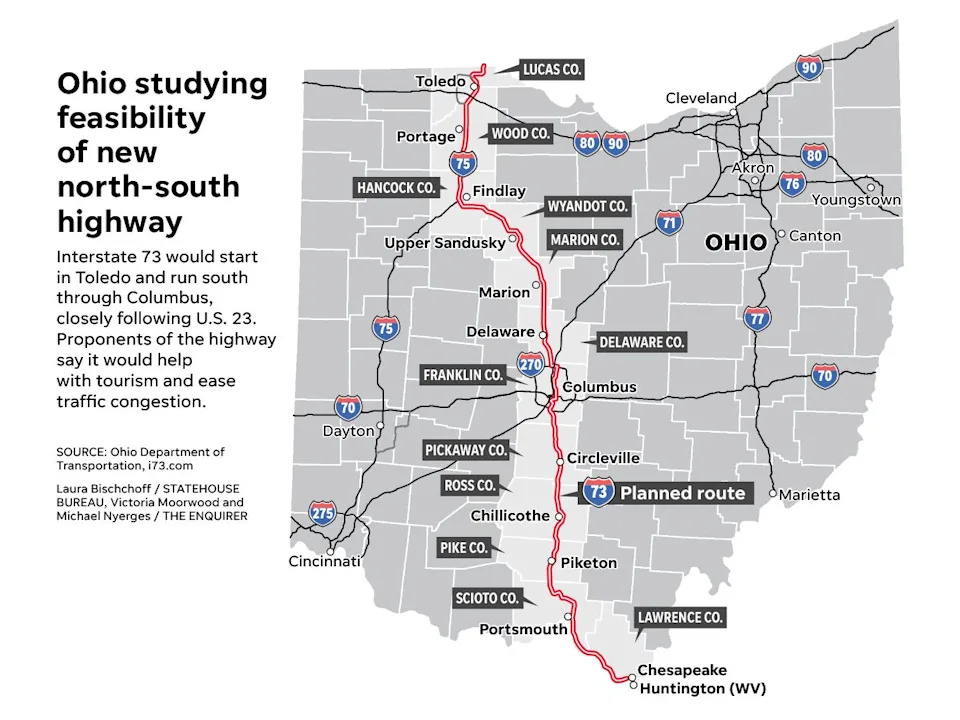
Ohio Department of Transportation spokesman Matt Bruning said the state is dealing with U.S. 23 congestion and won't wait for the I-73 plan to become reality.
The I-73 plan has support from both ends of the state.
Brian Dicken, vice president for advocacy and strategic initiatives for the Toledo Chamber, said addressing congestion and safety along U.S. 23 just north of Columbus is the priority.
"When I come to Columbus, I don't know if it'll take 2 and a half hours or four hours. It depends on what you run into," Dicken said.
Ohio needs a bypass that allows through traffic to travel off U.S. 23 and join I-71, he said. More broadly, Ohio needs to look at ways to make accessing customers and goods in the Southeastern U.S. easier, he said.
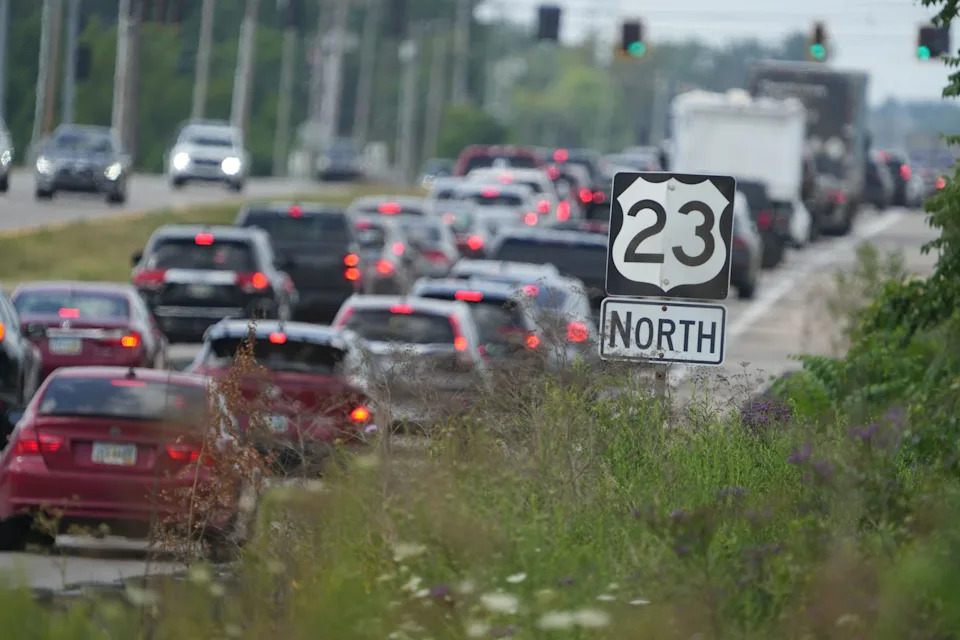
Taylor, who serves on the House Transportation and Infrastructure Committee, said in an email: "Southern Ohio is the only region in the Buckeye State without a major interstate, preventing the region from connecting with the modern economy and the economic growth that comes with it. This interstate would revitalize southern Ohio to finally give Appalachian businesses the tools they need to succeed."
Where does Interstate 73 begin and end?
In Ohio, I-73 would start in Toledo and run south through Columbus. The interstate would continue south through Chesapeake to the Kentucky and West Virginia border.
Much of the interstate would closely follow U.S. 23, and could transition parts of the state route to interstate lanes, depending on the outcome of the feasibility study.
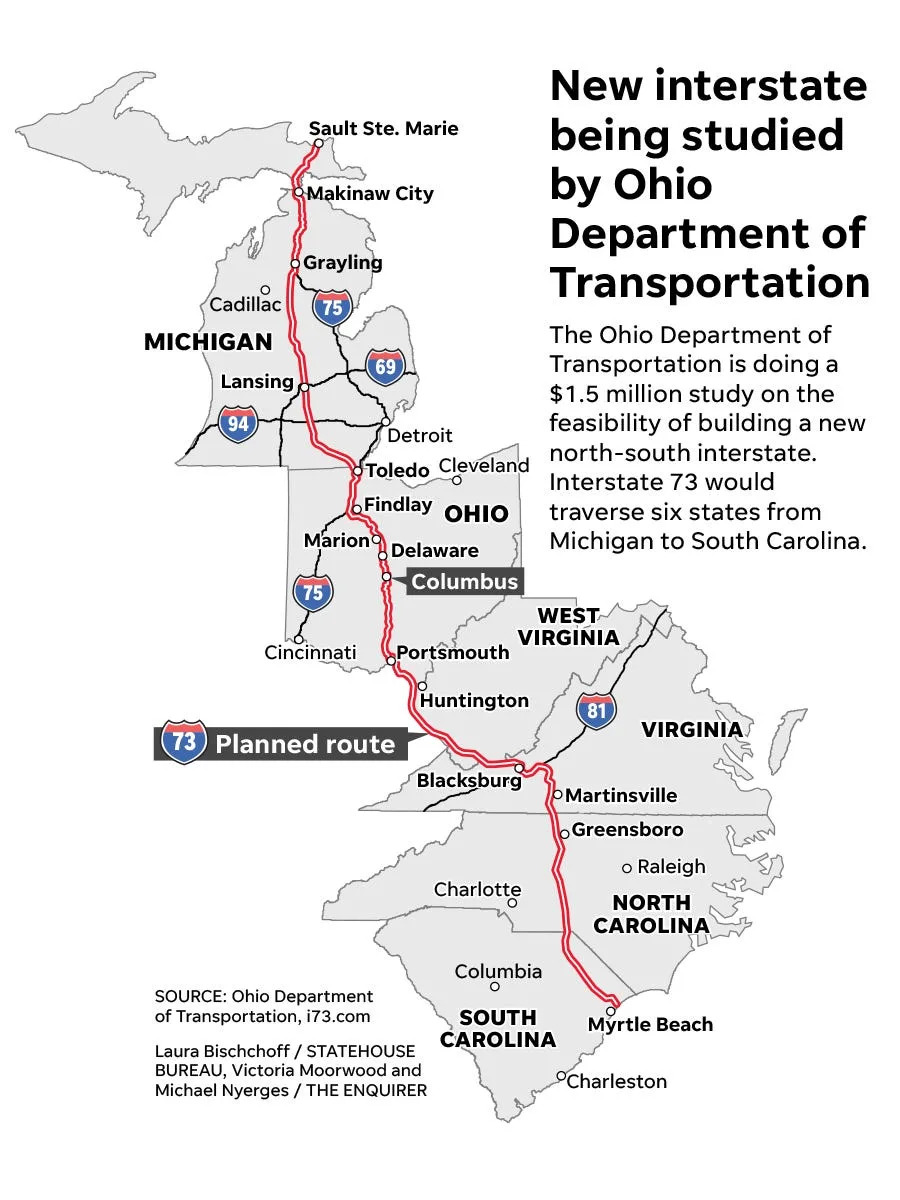
The number of lanes I-73 would have has not been determined.
In Michigan, I-73 would follow parts of I-75 in northern Michigan and the Upper Peninsula but may include a new route through Lansing and central Michigan.
South of Ohio, it would follow along the southern edge of West Virginia and cut through western Virginia and bisect North Carolina and South Carolina, ending at Myrtle Beach.
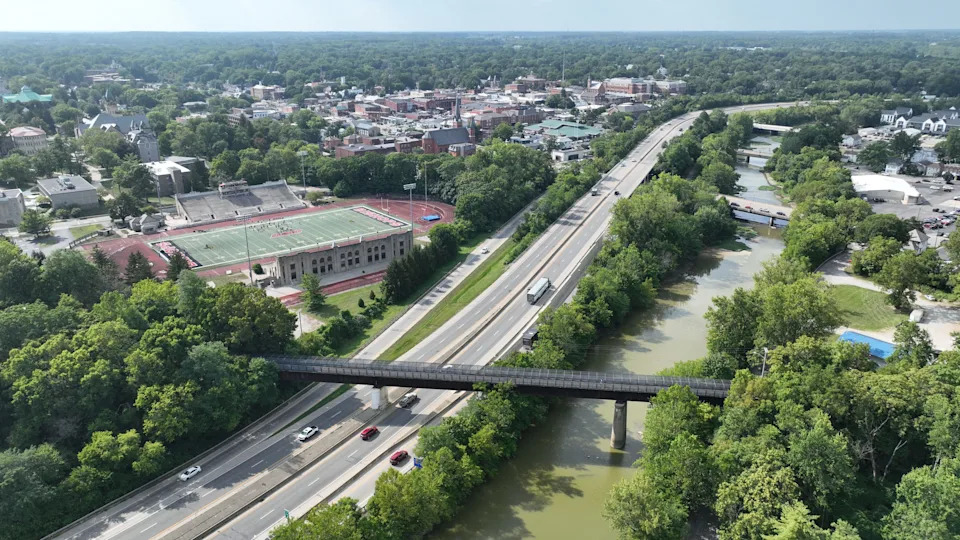
What comes next?
Local and state leaders and Ohio Department of Transportation will determine whether to move forward with the project after the feasibility study ends in December 2026.
The study should give a clearer picture about how much time and money I-73 would require in Ohio.
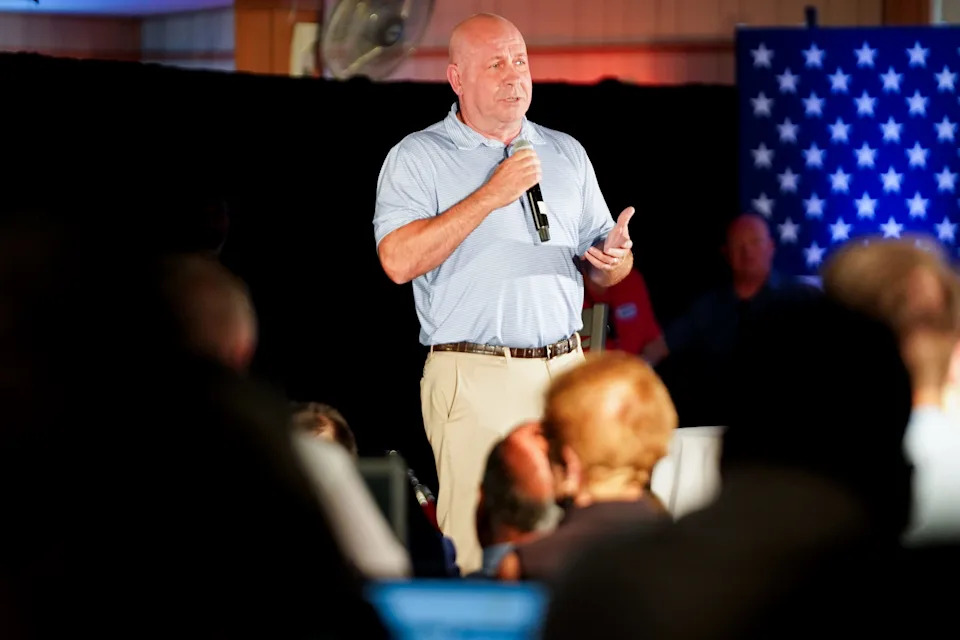
One of the greatest public works projects in history
Started in 1956 under the Eisenhower administration, the interstate highway system changed how Americans travel and move goods.
The freeway system adopted uniform standards for construction and signage. While some existing freeways were merged into the system, most of the routes were new. Construction in urban areas disrupted neighborhoods and displaced residents.
The original system, completed in 1992, took 35 years to build but since then more segments and spurs have been added onto the network.
What does it take to build an interstate?
Money. Lots of money.
Interstate highways require land purchases, environmental and engineering studies, and building materials and crews. The price tag per mile hinges on multiple factors such as land values and topography.
State government reporter Laura Bischoff can be reached at [email protected] and @lbischoff on X.
Do you think central Ohio needs another interstate?
This article originally appeared on The Columbus Dispatch: I-73 could become new interstate through Ohio
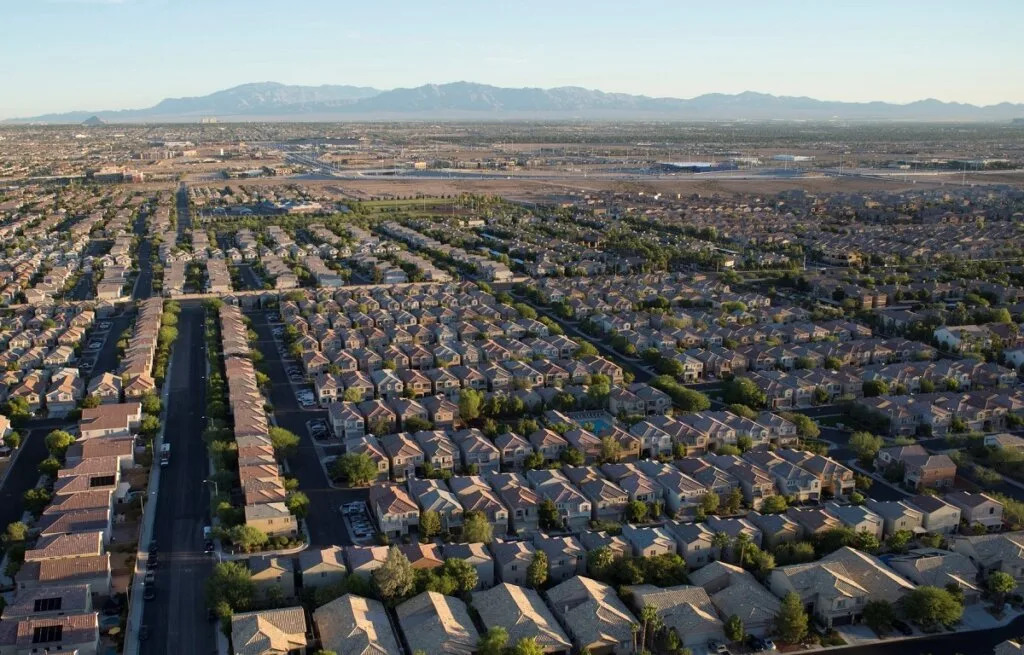







Comments